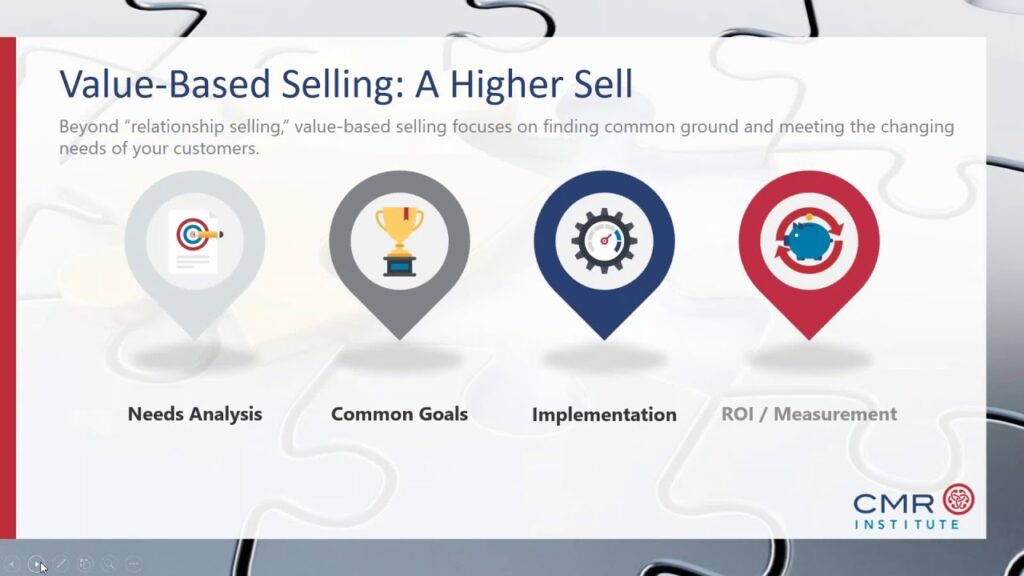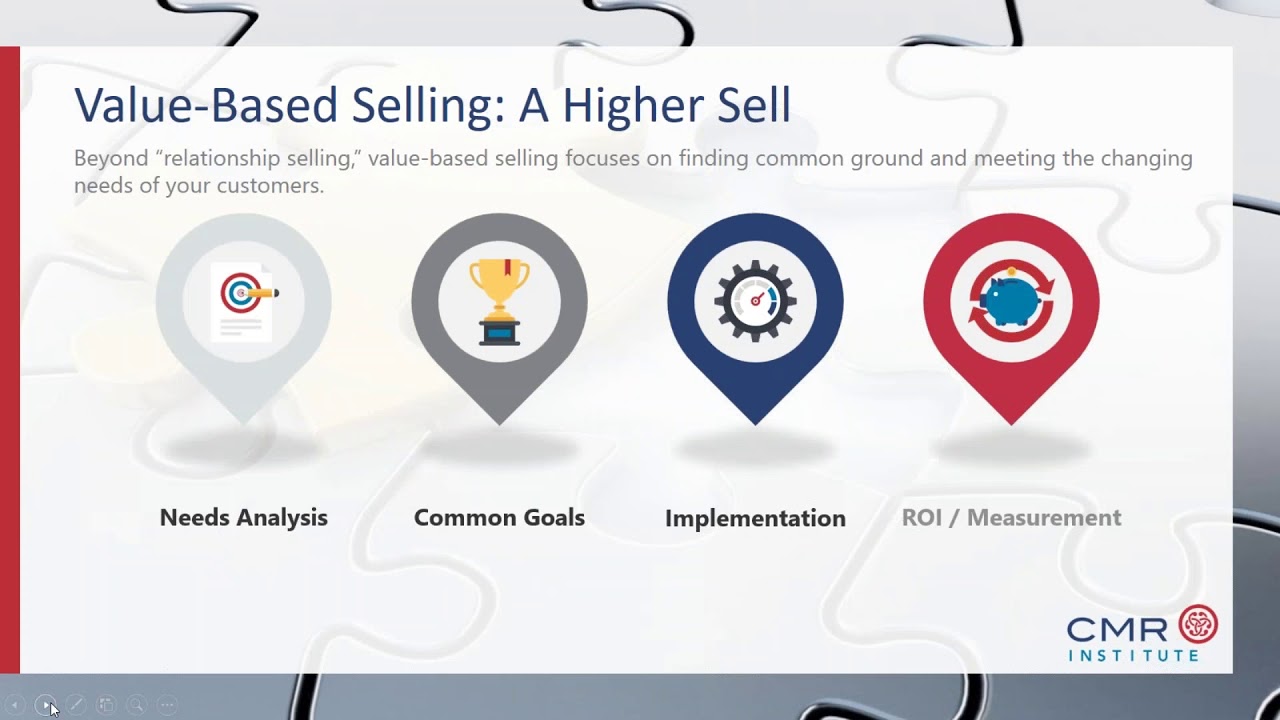
Unlocking Success: Mastering the Value Based Selling Strategy
In today’s competitive marketplace, simply offering a product or service isn’t enough. Customers are increasingly discerning, seeking solutions that genuinely address their needs and provide demonstrable value. This is where the value based selling strategy comes into play. It’s a customer-centric approach that focuses on highlighting the tangible benefits and long-term impact of your offering, rather than solely focusing on price. By understanding and articulating the unique value proposition, sales professionals can build stronger relationships, increase customer loyalty, and ultimately, drive revenue growth.
Understanding the Essence of Value Based Selling
Value based selling isn’t just a sales technique; it’s a philosophy. It’s about shifting the conversation from features and specifications to the concrete outcomes a customer can expect. It requires a deep understanding of the customer’s business, their challenges, and their goals. By aligning your offering with these specific needs, you can demonstrate how your solution provides superior value compared to the competition. This approach is particularly effective when dealing with complex solutions or high-value purchases where the perceived risk is higher.
At its core, value based selling involves these key elements:
- Identifying Customer Needs: Thoroughly understanding the customer’s pain points, challenges, and desired outcomes.
- Quantifying the Value: Translating the benefits of your solution into measurable terms, such as increased revenue, reduced costs, or improved efficiency.
- Communicating the Value: Clearly and persuasively articulating the value proposition to the customer, using data and evidence to support your claims.
- Justifying the Price: Demonstrating that the price of your solution is justified by the value it delivers, resulting in a strong return on investment (ROI).
The Benefits of Implementing a Value Based Selling Strategy
Adopting a value based selling strategy can yield significant benefits for both your sales team and your organization as a whole. Here are some of the most notable advantages:
- Increased Sales Conversion Rates: By focusing on value, you can overcome price objections and close more deals. Customers are more willing to invest when they understand the tangible benefits they will receive.
- Higher Profit Margins: When you sell on value, you can justify a higher price point, leading to increased profitability. This is because customers are paying for the outcomes, not just the product or service itself.
- Stronger Customer Relationships: Value based selling fosters trust and collaboration. By understanding and addressing the customer’s needs, you build a long-term partnership based on mutual success.
- Reduced Price Sensitivity: When customers are focused on the value they receive, they are less likely to be swayed by lower-priced competitors. The perceived value outweighs the price difference.
- Improved Customer Loyalty: By consistently delivering value and exceeding expectations, you can cultivate loyal customers who are more likely to make repeat purchases and recommend your business to others.
- Competitive Differentiation: In a crowded marketplace, a value based selling strategy can help you stand out from the competition. By focusing on the unique value you offer, you can attract customers who are looking for more than just the lowest price.
Implementing a Successful Value Based Selling Strategy: A Step-by-Step Guide
Implementing a value based selling strategy requires careful planning and execution. Here’s a step-by-step guide to help you get started:
Step 1: Understand Your Customer’s Business
The foundation of value based selling is a deep understanding of your customer’s business. This involves researching their industry, their competitors, their challenges, and their goals. The more you know about your customer, the better equipped you will be to identify their needs and tailor your value proposition accordingly. Use tools like industry reports, financial statements, and customer surveys to gather insights. [See also: Conducting Effective Customer Research]
Step 2: Identify Customer Needs and Pain Points
Once you have a solid understanding of your customer’s business, you can begin to identify their specific needs and pain points. What are the challenges they are facing? What are their biggest priorities? What are they trying to achieve? Ask open-ended questions, listen attentively, and probe for deeper insights. This information is crucial for crafting a compelling value proposition.
Step 3: Quantify the Value of Your Solution
The next step is to quantify the value of your solution in terms that are meaningful to the customer. How will your solution help them increase revenue, reduce costs, improve efficiency, or mitigate risk? Use data and evidence to support your claims. Develop a value calculator or ROI model that demonstrates the tangible benefits of your offering. Be realistic and transparent in your calculations. Consider factors like implementation costs, training expenses, and potential risks.
Step 4: Develop a Compelling Value Proposition
Based on your understanding of the customer’s needs and the quantified value of your solution, you can now develop a compelling value proposition. This is a clear and concise statement that articulates the unique benefits of your offering and how it addresses the customer’s specific challenges. Your value proposition should be tailored to each individual customer and should resonate with their specific needs and priorities. Make sure it is easy to understand and remember. A strong value proposition is a key component of a successful value based selling strategy.
Step 5: Communicate the Value Effectively
Once you have developed a compelling value proposition, you need to communicate it effectively to the customer. This involves using persuasive language, visual aids, and storytelling techniques to highlight the tangible benefits of your solution. Focus on the outcomes the customer can expect, rather than just the features and specifications. Be prepared to answer questions and address any concerns the customer may have. Tailor your communication style to the customer’s preferences and communication style.
Step 6: Justify the Price and Overcome Objections
In value based selling, the price is justified by the value the customer receives. Be prepared to explain how the price of your solution is justified by the tangible benefits it delivers. Use your value calculator or ROI model to demonstrate the return on investment. Address any price objections by reiterating the value proposition and highlighting the long-term benefits of your solution. Be confident and assertive in your pricing strategy. [See also: Handling Price Objections in Sales]
Step 7: Continuously Monitor and Improve
Value based selling is an ongoing process. Continuously monitor your sales performance, gather feedback from customers, and identify areas for improvement. Track key metrics such as sales conversion rates, average deal size, and customer satisfaction scores. Use this data to refine your value proposition, improve your communication skills, and optimize your sales process. Regularly train your sales team on the latest techniques and best practices in value based selling.
Essential Skills for Value Based Selling Professionals
To excel in value based selling, sales professionals need to possess a specific set of skills and competencies. These include:
- Active Listening: The ability to listen attentively and understand the customer’s needs and concerns.
- Questioning Skills: The ability to ask insightful questions that uncover the customer’s pain points and priorities.
- Communication Skills: The ability to communicate clearly and persuasively, both verbally and in writing.
- Analytical Skills: The ability to analyze data and quantify the value of your solution.
- Problem-Solving Skills: The ability to identify and solve the customer’s problems.
- Business Acumen: A strong understanding of the customer’s industry and business.
- Relationship Building: The ability to build strong relationships with customers based on trust and mutual respect.
Tools and Technologies to Support Value Based Selling
Several tools and technologies can help sales teams implement and execute a value based selling strategy effectively. These include:
- Customer Relationship Management (CRM) Systems: CRM systems provide a centralized repository for customer data, allowing sales teams to track customer interactions, manage leads, and personalize their communication.
- Sales Enablement Platforms: Sales enablement platforms provide sales teams with access to relevant content, training materials, and tools to help them close more deals.
- Value Calculators and ROI Models: These tools help sales teams quantify the value of their solution and demonstrate the return on investment to customers.
- Presentation Software: Presentation software allows sales teams to create compelling presentations that showcase the value of their solution.
- Data Analytics Tools: Data analytics tools help sales teams track key metrics and identify areas for improvement.
The Future of Value Based Selling
As customers become increasingly sophisticated and demanding, value based selling will become even more critical for success. Sales teams that can effectively articulate the value of their solutions and build strong relationships with customers will be best positioned to thrive in the future. The focus will continue to shift from selling products and services to providing solutions that address the customer’s specific needs and deliver measurable results. Embracing a value based selling strategy is not just a trend; it’s a fundamental shift in the way businesses approach sales and customer relationships. By prioritizing value, companies can build stronger, more profitable relationships with their customers and achieve long-term success.
In conclusion, the value based selling strategy is more than just a sales technique; it’s a customer-centric approach that focuses on delivering tangible benefits and building long-term relationships. By understanding your customer’s needs, quantifying the value of your solution, and communicating it effectively, you can increase sales conversion rates, improve customer loyalty, and achieve sustainable growth. Embrace the power of value based selling and unlock the full potential of your sales team.

